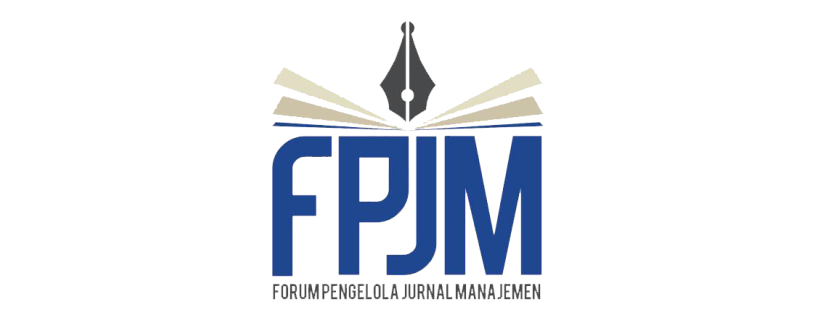Model Kewirausahaan Sosial Berbasis Ekonomi Kreatif dalam Mendukung Sektor Pariwisata di Kota Tasikmalaya
DOI:
https://doi.org/10.26905/jmdk.v8i2.4318Keywords:
Covid-19, Financial Sustainability, Social Business Model, Social EntrepreneurAbstract
Covid19 contributed to various fields of life including one of the handicraft industries    in Tasimalaya. The craftsmen in Tasikmalaya asked for difficulties in marketing their products because their demand dropped during the pandemic. This research seeks to develop which social entrepreneurship model is suitable for artisans during the Pandemic. The hope is that by applying this social entrepreneurship model, crafters can have financial sustainability. The study is conducted using observations and interviews as well as Participatory Rural Assessments. Based on the results of research and literature studies, this study proposes several alternative social entrepreneurship models that can be applied. In addition, this research also found an important role as well as the government in creating competitive advantage for craftsmen.
https://doi.org/10.26905/jmdk.v8i2.4318
Downloads
References
Adimiharja K, H.H. (2003). Participatory Research Appraisal: Pengabdian Pemberdayaan Masyarakat. Bandung: Humaniora.
Alisjahbana, Beti. (2009). Merangsang kreatifitas dan Inofasi. Betti alisjahbana’s Blog
Alter, S. K. (2006). Social enterprise models and their mission and money relationships. In A. Nicholls (ed.), Social Entrepreneurship: new models of sustainable social change. Oxford: Oxford University Press
Austin, J.E., Leonard, H., Reficco, E., & Wei-Skillern, J. (2004). Corporate social entrepreneurship: A new vision of CSR. Harvard Business School Working Paper No. 05-021. Boston: Harvard Business School.
Casadesus-Masanell, R. & Ricart, J.E. (2007). Competing through business models. Working Paper 713, IESE Business School, Barcelona.
Dees, J. G. (1998). Enterprising nonprofits: What do you do when traditional sources of funding fall short? Harvard Business Review, pp. 55-67.
Creswell, John W. (2017). Research Desain (Pendekatan Metode Kualitatif, Kuantitatif, dan Campuran). Edisi 4. Terjemahan: Achmad Fawaid dan Rianayati Kusmini Pancasari. Yogyakarta: Pustaka Pelajar
Dees, J.G. & Anderson, B.B. (2003). For-profit social ventures, International Journal of Entrepreneurship Education (special issue on social entrepreneurship), 2, 1–26.
Emerson, J. & Twerksy, F. (Eds.). (1996, September). New social entrepreneurs: The success, challenge and lessons of non-profit enterprise creation. San Francisco: Roberts Foundation, Homeless Economic Development Fund.
Hulgard. Lars. (2010). Discourses of social entrepreneurship-variation of the same theme? EMES European Research Network
Martin, Roger L. & Sally Osberg. (2007). Social entrepreneurship the case for definition, Stanford Social Innovation Review 29-39. [Online] Available: www.ssireview.org.
Mercho L. (2014). Social entrepreneurship: A Smarter way to save the world. news.unca.edu. http://news.unca.edu/features/social-entrepreneurship-smarter-way-save-world. Accessed January 3, 2018
Morris, M., Schindehutte, M. & Allen, J. (2005). The entrepreneur’s business model: Toward a unified perspective. Journal of Business Research 58, 726– 735.
Moulaert, F., MacCallum, D., Mehmood, A. and Hamdouch, A. (eds.) (2013), The International Handbook on Social Innovation: Collective Action, Social Learning and Transdisciplinary Research, Cheltenham: Edward Elgar
Neuman, W. L. (2007). Basics of Social Research: Qualitative and Quantitative Approaches, Boston: Pearson Education, Inc.
Nicholls, Alex (2006). Social Entrepreneurship New Models Of Sustainable Social Change, Oxford University Press Inc.: New York
Osterwalder, A. & Pigneur, Y. (2010). Business Model Generation. Hoboken, NJ: Wiley
Reis, T. (1999). Unleashing the new resources and Entrepreneurship For The Common Good: A Scan, Synthesis And Scenario For Action. Battle Creek, MI: W.K. Kellogg Foundation.
Santosa, S.P. (2007). Peran socio entreprenurship dalam pembangunan. Makalah dipaparkan dalam acara dialog “Membangun Sinergisitas Bangsa Menuju Indonesia Yang Inovatif, Inventif dan Kompetitif†diselenggarakan oleh Himpunan IESPFE-Universitas Brawijaya Malang, 14 Mei 2007
Silalahi, Ulber. (2012). Metode Penelitian Sosial. Bandung: Reflika Aditama
Sledzik, Karol (2013). “Schumpeter‟s view on innovation and entrepreneurshipâ€, Journal of Social Scence Research Network
Thompson, J. L., Alvy, G., & Lees, A. (2 000). Social entrepreneurship: A new look at the people and the potential. Management Decision, 38(6), 328–338
Wolfgang, Grassl. (2012). Business models of social enterprise: A design approach to hybridity, ACRN Journal of Entrepreneurship Perspectives 1(1) 37 – 60
Zadek, S. & Thake, S. (1997, June 20). Send in the social entrepreneurs. New Statesman, 26, 31.
Zahra, S. A., Rawhouser, H. N., Bhawe, N., Neubaum, D. O., & Hayton, J. C. (2008). Globalization of social entrepreneurship opportunities. Strategic Entrepreneurship Journal, 2(2), 117–131
Zott, C., Amit, R. & Massa, L. (2010). The business model: Theoretical roots, recent developments, and future research. Working Paper 862, IESE Business School, Barcelona
Downloads
Published
Issue
Section
License
Authors who publish with this journal agree to the following terms:
(1)Â Copyright of the published articles will be transferred to the journal as the publisher of the manuscripts. Therefore, the author confirms that the copyright has been managed by the journal.
(2) Publisher of Jurnal Penelitian is University of Merdeka Malang.
(3) The copyright follows Creative Commons Attribution–ShareAlike License (CC BY SA): This license allows to Share — copy and redistribute the material in any medium or format, Adapt — remix, transform, and build upon the material, for any purpose, even commercially.












